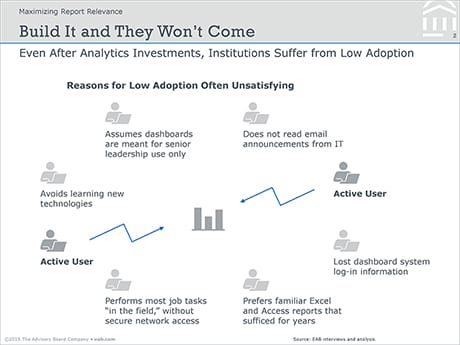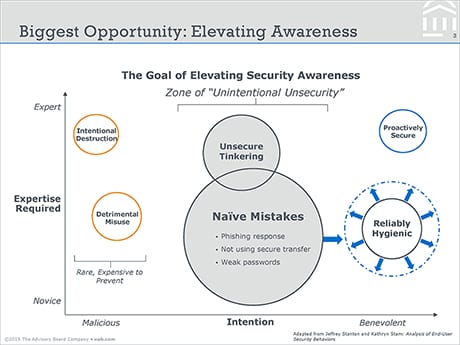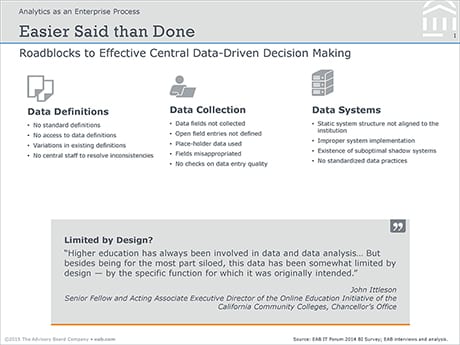Members often tell us that our webconferences generate great conversations—both within IT teams and across campus—and 85% of attendees report that the applicability of our most recent webconference on data governance was “”excellent” or “good.”
With the familiar back-to-school rush—dedicating enormous energy to the helpdesk, ensuring the summer upgrades are working, and putting out the inevitable fires—it is understandable that data governance might not be top of mind. However, data governance is crucial to an institutions’ success, so after the dust has settled, ensure the IT organization is dedicating the necessary resources for sustainable and productive data quality and security efforts.
In response to member feedback, we are presenting a three-part “back to school” webconference series covering best practices for data governance and quality, data accessibility, and information security awareness.
- Advancing Data Management: Achieving Excellence in Data Governance and Data Quality
- Maximizing Data Accessibility and Impact
- Improving Institutional Data Security Awareness
Advancing Data Management: Achieving Excellence in Data Governance and Data Quality
The first webconference in our series focuses on how to develop a sustainable data governance initiative and improve data quality. Data governance and quality are the foundation for strong decision support initiatives, but there are multiple, persistent obstacles to good data management. Our session will include tactics to overcome some of the most common obstacles to sustainable data governance, including data territorialism and data denial across campus.
Having sustained governance processes and an operational—and easily accessible—data dictionary will only impact decisions if decision makers have access to high-quality data. This involves strong stewardship of data, as well as processes to increase accuracy of data at point of entry. Improving these aspects can help boost the confidence and adoption of data-driven decision making across campus.
Maximizing Data Accessibility and Impact
The second installment of our series explores how to improve institutional access to data while balancing openness and security. Data access at many institutions is determined on a case-by-case basis, which is expensive, slow, subjective, and ultimately unsustainable.
This session presents two models for role-based data access that have improved breadth of access while increasing data security. We’ll discuss how more relevant reports lead to increased usage, including tactics to better communicate the information in, and use of, central reports.

Improving Institutional Data Security Awareness
In observation of National Cyber Security Awareness Month, our third presentation focuses on how to make information security risks relevant for campus constituents. Based on 10 years of data from the Privacy Rights Clearinghouse, nearly 70% of breaches in higher education were a result of “unintended disclosure” or “hacking and malware,” both very preventable vulnerabilities.
Ubiquitous security awareness—smarter digital behavior—can dramatically improve your institution’s risk profile. Our session will provide strategies for just-in-time communications to engage board members and executives as well as recommendations to ensure locally relevant unit-level security presentations that influence behavior.
So, before students arrive, schedule some time for after they’ve settled in to focus on a truly strategic initiative—managing data as one of the institution’s most valuable assets.

More Blogs

How 76 data leaders are building better data governance

How can you tame data sprawl? Consider a chief data officer

